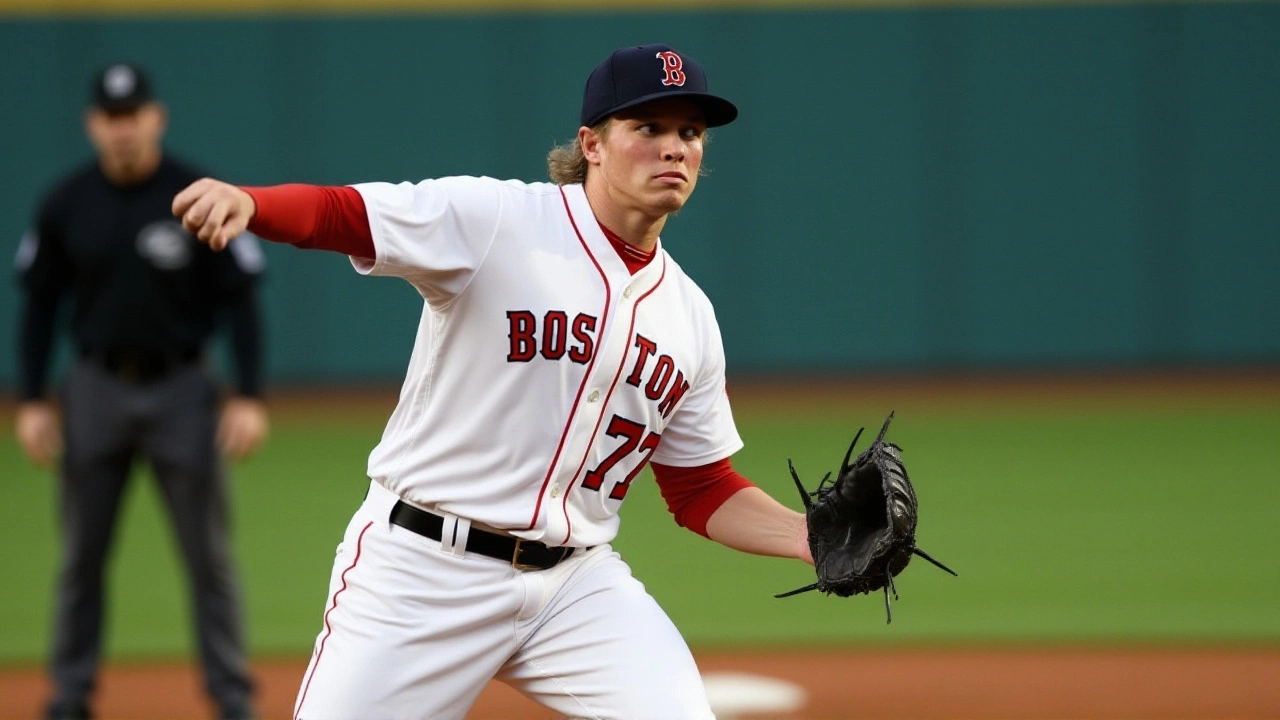When Alex Cora, manager of Boston Red Sox yanked rookie pitcher Kyle Connelly after just four innings, the move raised eyebrows across the league. The decision came during Tuesday night’s game at Fenway Park, where the 23‑year‑old had been delivering a surprisingly steady performance against the Oakland Athletics. Cora’s explanation was simple yet layered: it was about protecting Connelly’s arm for the long haul, not about the two runs he’d allowed.
Why the early hook mattered
Connelly, a University of Connecticut product, was on a 72‑pitch count when Cora signaled the bullpen. In those four innings he surrendered two runs on four hits, struck out four and walked one – stats that would have kept most veteran starters on the mound. Yet the Red Sox were up 8‑3, giving Cora the luxury to prioritize development over immediate win‑or‑lose pressure.
"We're trying to be smart with him," Cora told the post‑game press conference. "He's been good for us, but we have to think about the big picture. We don't want to push him too hard, especially this late in the season." The manager’s words echoed a broader philosophy the organization has embraced since the 2022 draft, emphasizing pitch‑count limits and gradual exposure for young arms.
Connelly’s rapid rise
The rookie’s journey has been a textbook example of the Red Sox’s farm system pipeline. Drafted in the 11th round of the 2022 MLB Draft out of UConn, Connelly climbed the ladder through Single‑A Salem, High‑A Greenville, and Double‑A Portland, posting sub‑3.00 ERAs at each stop. He earned a call‑up to Triple‑A Worcester on September 15, 2024, and made his MLB debut five days later at Target Field against the Minnesota Twins, logging 4.1 innings and allowing three runs.
Now, after his second start against Oakland, his cumulative MLB line reads 11.1 innings, six earned runs, a 4.76 ERA, ten hits, seven strikeouts, and three walks. His fastball sits in the low‑mid 90s, complemented by a sharp slider and a changeup that have already shown effectiveness against both left‑handed and right‑handed hitters.
Inside the decision‑making room
Red Sox pitching coach Andrew Bailey was seen consulting with Cora throughout Connelly’s outing. While the exact nature of their conversation remains private, seasoned observers believe they discussed mechanics, fatigue markers, and the upcoming schedule’s impact on the young arm.
When the fifth inning arrived, reliever Brennan Bernardino took the mound. The bullpen held the line for the remaining five innings, preserving the 8‑3 victory and underscoring the Red Sox’s depth on the hill.
Workload management in the modern game
Boston’s cautious approach isn’t an isolated case. Across MLB, teams are tightening pitch‑count protocols after a spate of arm injuries to promising arms – think of the 2023 Yankees’ early‑season calf strain that turned into an elbow issue for rookie pitcher Addison Barger. In a 2024 study by the Sports Medicine Association, pitchers who averaged fewer than 95 pitches per start in their first 15 MLB appearances had a 12% lower incidence of shoulder injuries over the next two seasons.
For the Red Sox, the stakes are higher than a single win. With the 2024 regular season winding down on September 29 and Boston already out of playoff contention, the club is using every remaining game to assess talent for the 2025 campaign. Cora noted that the organization plans to give Connelly at least one more start before the season closes, keeping his pitch count under 80.
Broader implications for Boston’s rotation
The decision also signals how Boston might handle other young arms like rookie right‑hander Jordan Smoot and left‑hander Tyler Ruiz, both of whom have been shuffled between Worcester and the majors this year. By setting a clear precedent – performance is secondary to health and longevity – Cora hopes to cultivate a culture where pitchers trust the front office’s long‑term vision.
Fans have reacted with a mix of relief and frustration. Some applaud the “smart” move, citing Connelly’s sturdy arm and the long‑term benefits. Others, hungry for a playoff push, wonder if the Red Sox are being overly conservative. The truth likely sits somewhere in between, as the franchise balances immediate competitiveness with the imperative to nurture its next generation of starters.
Key facts
- Game date: Tuesday, September 24, 2024
- Location: Fenway Park
- Final score: Red Sox 8, Athletics 3
- Connelly’s line: 4 IP, 2 R, 4 H, 4 K, 1 BB, 72 pitches
- Relief pitcher who replaced him: Brennan Bernardino
What’s next for Connelly?
Looking ahead, the Red Sox have penciled in a tentative start for Connelly on September 27 against the Toronto Blue Jays. If Cora sticks to the 80‑pitch ceiling, the rookie could finish the year with roughly 150 total pitches – a reasonable load that leaves ample runway for a full 2025 season.
Meanwhile, the organization will continue to monitor Connelly’s velocity and command via advanced telemetry. A recent spin‑rate report from TrackMan showed his fastball averaging 3,100 RPM, comfortably above the league average of 2,900 RPM for starters his age.

Frequently Asked Questions
How does this decision affect the Red Sox’s chances of winning the last games?
With Boston already out of playoff contention, the immediate impact on win‑loss totals is minimal. The early pull allowed the bullpen to preserve the lead, and the move keeps Connelly healthy for future starts, which the organization deems more valuable than a single win.
Why is workload management especially important for rookie pitchers?
Rookie arms are still adapting to the rigors of a 162‑game schedule. Studies show that excessive early‑season pitches can increase the risk of shoulder and elbow injuries, which can derail careers before they truly begin.
What does Cora’s comment about “the big picture” refer to?
He’s looking beyond the current season, aiming to develop a rotation that can compete for championships in 2025 and beyond. Protecting Connelly’s arm ensures he’s available for a full spring training and a healthy debut next year.
Who else in the Red Sox organization is being monitored for pitch‑count limits?
Besides Connelly, the club is closely tracking the workloads of fellow rookies Jordan Smoot and Tyler Ruiz, as well as veteran starter Nathan Eovaldi, who is on a 95‑pitch ceiling for his remaining starts.
What are the expectations for Connelly’s next start?
If the Red Sox keep him under 80 pitches, analysts predict he’ll deliver another solid inning or two, focusing on command rather than velocity. Success will hinge on his ability to sustain his slider and changeup effectiveness deep into the game.

